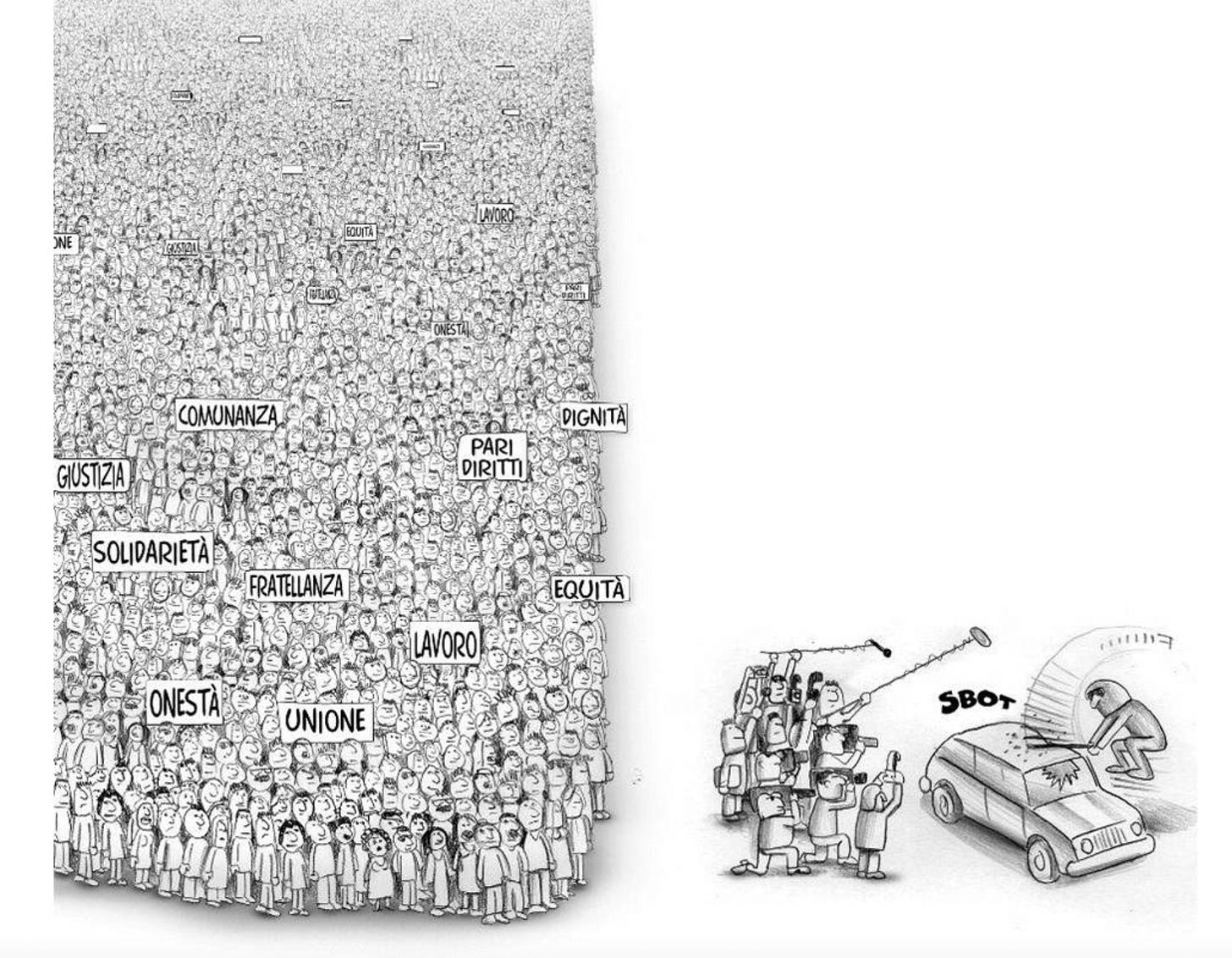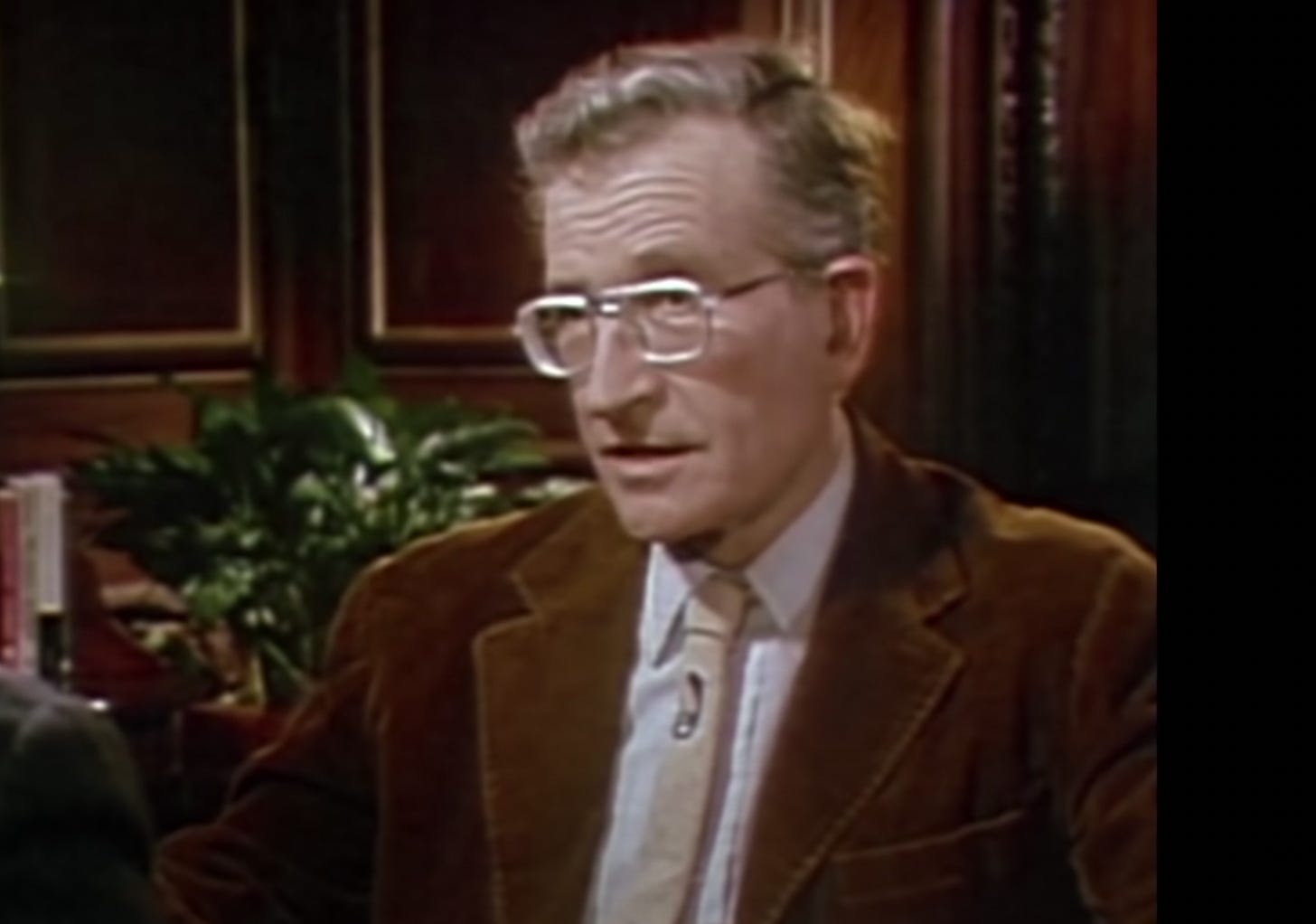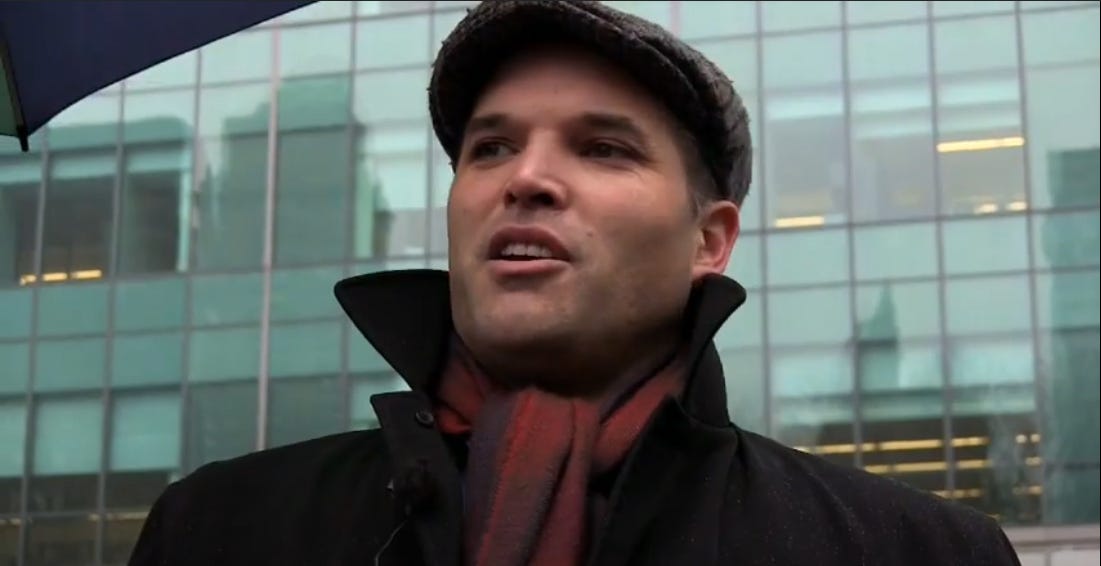Challenging the 'Five Filters'
Why the job of journalists is getting harder
The role of the journalist in a liberal democracy as watchdog, provider of information necessary for informed debate, and as a voice of the people seems increasingly under threat. In my inaugural post for The Quaking Swamp Journal I touched on how it can be difficult for reporters to challenge accepted narratives and not be marginalized in the process. The pressures not to challenge come from a variety of places—a subject we’ll return to—and include the reporter’s own fear of breaking rank.
According to Critical Media Review, “News is not an exact representation of reality but rather a reconstruction from various angles of a small section of reality. This is not to say journalists necessarily lie or consciously distort the truth, but that journalists by covering particular stories, using particular sources from a particular news angle are constructing reality through a selective process.”
“While agenda setting or gatekeeping decides what a newspaper or broadcaster covers or does not cover, the frame is the overarching angle of how the various stories are treated once they are covered.”
Both framing and agenda setting are “inherently ideological acts,” whether they are done consciously or not. “The frame of a story (or group of stories) will have influence on how that story is investigated and reported, who the journalist chooses to speak to, what questions he or she asks and how information is interpreted and reported.”
Example of media framing, from Critical Media Review (screen shot).
To illustrate this point, I offer the following example: Between 2010 and 2012, I wrote a series of articles for The Coast about the aftermath of the collapse of the Atlantic groundfish and how the grey seals were being blamed for the failure of Atlantic cod to recover. One of the stories, co-authored with Bruce Wark, became the basis of my 2013 book, The Devil and the Deep Blue Sea: An Investigation into the Scapegoating of Canada’s Grey Seal.
I was compelled to delve into the subject when a well-known Dalhousie University marine biologist, Boris Worm spoke up at a Law Amendments Committee hearing and contradicted the mainstream narrative. The Hearing was being held because the province had opened up Hay Island, a wilderness area, to commercial sealing. Furthermore, the government proposed to change the Wilderness Areas Protection Act to accommodate it. It argued that the grey seals were harming the biodiversity by eating too many fish, and stunting the recovery of the cod—a species that had been brought to its knees two decades earlier because of overfishing.
Boris Worm stood up and provided this astonishing counter-narrative: the seals could actually be helping the cod.
Grey seal pups, Hay Island, Nova Scotia. Courtesy: Rebecca Aldworth
Worm pointed to increases in the numbers of small pelagic fish which eat the larvae and eggs of cod and concluded that because seals feed on pelagic fish, "seals today are actually not hindering the recovery of cod, but actually are good for the recovery of cod."
At the time, the intricacies of the marine food web had been boiled down to one simple mathematical equation: less seals equal more cod. Once a story gets planted, and is continually reinforced and repeated, it may as well be a fact. When this happens it takes a huge amount of effort to correct it.
Despite real pressures not to do so, a number of scientists and academics agreed to be interviewed, and pointed to the complexity of the relationship between seals and cod: how the collapse of the groundfish—itself a result of overfishing—ravaged the biological structure of the marine ecosystem shifting it into an altered state, and how the scapegoating of the seals was politically necessary in order to maintain the status quo in the fishing industry. This is not to say grey seal abundance doesn’t play some role in hindering cod, but it is only one of many reasons for the failure of cod to recover, most of them anthropogenic.
In other words, if we really wanted to save the cod, we would need to change the way we fish.
Noam Chomsky, in Manufacturing Consent (the film)
In their 1988 book, Manufacturing Consent: The Political Economy of the Mass Media, Noam Chomsky and Edward S. Herman put forth the concept of the “propaganda model,” to explain how systemic biases function in corporate media. The theory postulates five “filters” that determine what news gets presented:
1. Ownership, and profit orientation of the media: mainstream outlets are typically large corporations or part of large conglomerates and the information presented will be biased toward those interests; news items that challenge these interests or endanger them will be censored.
2. Funding sources, namely advertising: the news is “filler” to get readers to see the ads; news that conflicts with the interests of advertisers will be marginalized.
3. Sourcing mass-media news: Reporters depend on official sources of information, and if they question these, they may be denied access; reporters shy away from writing articles that will offend or harm these official sources—corporate, government, or expert—for fear of losing access to them; as a result, reporters adopt an uncritical stance and in doing so can avoid experiencing cognitive dissonance.
4. Flak and the enforcers: When a reporter casts doubt on a prevailing narrative that favours established power, they or the organization they work for will get “flak” and be discredited; it’s a way of disciplining the media. Chomsky says the ability to produce “flak” is related to power.
5. Fear ideology: Chomsky and Herman’s book was written during the Cold War, and at that time the fifth filter was “anti-communism.” Chomsky has since updated it to “fear.” When any fear-based fervor is aroused it has a “dual purpose,” says Chomsky, “partly to get rid of people you don’t like, but partly to frighten the rest. Because if people are frightened, they will accept authority.”[i]
Chomsky writes:
“The five filters narrow the range of news that passes through the gates, and even more sharply limit what can become ‘big news,’ subject to sustained news campaigns.”
And:
“Propaganda campaigns in general have been closely attuned to elite interests…Conversely, propaganda campaigns will not be mobilized where victimization, even though massive, sustained, and dramatic, fails to meet the test of utility to elite interests… In sum, a propaganda approach to media coverage suggests a systematic and highly political dichotomization in news coverage based on serviceability to important domestic power interests.”
Chomsky wrote this back in 1988. Add four decades worth of market-driven economic theory, also known as neoliberalism, and we are now in a place where nearly all the political power is concentrated in one place, among private elites. As Chomsky noted in his 1999 book Profit Over People: Neoliberalism and Global Order, neoliberalism wasn’t anything new, it was just the most recent version of a conflict that had existed for a good part of modern history—one where the elite few try to restrict the political rights and civic power of the many.
In his 2019 book, Hate Inc: Why Today’s Media Makes Us Despise One Another, journalist Matt Taibbi argues the news has actually become a “marketing process,” meant to “create masses of media consumers who’ve been trained to see in only one direction, as if they have been pulled through history on a railroad track, with heads fastened in blinders, looking only one way.”
News is “bait to lure you in to a pen, where you can be sold sneakers or bath soaps or prostatitis cures or whatever else studies say people of your age, gender, race, class, and political bent tend to buy,” writes Taibbi. “… people have to start understanding the news not as ‘the news,’ but as an individualized consumer experience — anger just for you.”
Taibii says, “there is utility in keeping us divided… the more separate we are, the more politically impotent we become.”
Matt Taibbi talks to Occupy Wall Street activists about Bank of America and the mortgage crisis. Wiki Commons.
Taibbi also points to the narrowing of mental horizons as a “twist on Manufacturing Consent’s description of an artificially narrowed debate.”
In his book, Taibbi draws Chomsky into the conversation for his take on what’s happened since Manufacturing Consent was published. Chomsky says that in some ways things haven’t changed much. Back in the mid-1970s, the rhetoric was of there being a “Crisis of Democracy.” Chomsky says it was the liberal position back then, and it argued the media “had become too adversarial, too independent.” The feeling was there was a need “to institute government controls to try to contain [the media] because of what they’re doing.”
Does this sound familiar?
But when it comes to the subject of Taibbi’s book—hate—and the increasing polarization and fanning of divisions, Chomsky says, “It’s always been described as some groups moving to the left, others moving right. I don’t think that’s happened. I think both groups have moved to the right. There’s a divide, but it’s misrepresented.”
Chomsky agrees with Taibbi that the divisiveness can also be serving another “propaganda purpose,” like keeping people from realizing their shared economic insecurities.
Taibbi:
“I looked back at thirty years of deceptive episodes—from Iraq to the financial crisis of 2008 to the 2016 election of Donald Trump—and found that we in the press have increasingly used intramural hatreds to obscure larger, more damning truths. Fake controversies of increasing absurdity have been deployed over and over to keep our audiences from seeing larger problems. We manufactured fake dissent, to prevent real dissent.”
But despite all this fakery, Taibbi insists that people should trust reporters.
“It’s the context in which they are operating that’s problematic…most journalists work for giant nihilistic corporations whose editorial decisions are skewed by a toxic mix of political and financial considerations.”
~
In 2016, I started writing for The Halifax Examiner, where a lot of good journalism continues to be produced. Here are links to some of my articles (all are outside the paywall):
Forestry, Biomass, Pulp and Paper, Species at Risk
Feeding the Fire: Biomass and Nova Scotia’s Race for the Bottom
Forest Tragedy: How the Forest Industry and Compliant Bureaucrats Hijacked the Public Will
Forest Keepers: A Field Guide to Boreal Felt Lichen and DNR Message Control
Testing the Limits: Critical Boreal Felt Lichen Habitat in Halifax County Slated to be Wiped Out
Testing the Limits (part 2): The Examiner goes on the Road in Search of an Endangered Lichen
Life After Pulp: Energy Miracles, Jobs, and other Nova Scotia Government Delusions
By Any Other Name: Nova Scotia’s Department of Lands and Forestry just made “Clearcuts” disappear
Pulp Culture: Nova Scotia’s Faustian Bargain with the Pulp Industry may Leave the Sawmills in Ruins
The Archaeology of Loss: How Industrial Logging in the Mi’kmaq Heartland is Destroying a lot More than Trees [Silver Award Winner, Atlantic Journalism Awards, 2020]
“Biodiversity Hotspot” Primed for Logging
The “Biomass, Freedom of Information and the DNR Company Men” Series (5 parts)
Part 2: An Open Letter to the FOIPOP Review Officer
Part 3: What Happened When This Reporter got Called Down to the Office?
Part 4: The Case of the Disappearing Forest Age Class Data
“Dirty Dealing” Series (Northern Pulp) (5 parts)
Part 2: Wading through the Quagmire of Northern Pulp’s Fast-Tracked Environmental Assessment
Part 4: Message Control and the Northern Pulp Mill’s Cancer-Causing Air Emissions
Part 5: Dalhousie Researcher Breaks Silence over Pulp Mill’s Cancer-Causing Air Emissions
“Climate Emergency” Series (4 parts):
Part 1: Why it’s Time to Ditch the Language of Economic Growth
Part 2: Why Growth, Even if it is Green, is Not Enough
Part 3: How to Turn Off the Economic Growth Engine
Part 4: Our Current Economy Can’t Address the Crisis; What are We Going to Do About it?
Aquaculture (CERMAQ):
“Rally” to Oppose Cermaq’s Proposed Industrial-scale Fish Farms Draws Large Crowds
Cermaq’s PR Fiasco (Part 1): Nova Scotians Raise Concerns, Cermaq’s Response? “Shit Happens”
Cermaq’s PR Fiasco (Part 2): Interview with Alexandra Morton
Facing “Overwhelming Opposition,” Aquaculture Giant Kills Plan to Open Fish Farms in Nova Scotia
COVID-19
Why did the Canadian Civil Liberties Association Challenge Newfoundland and Labrador’s Travel Ban?
What’s the Deal with Ivermectin and COVID? An Interview with Dr. Edward Mills, Principal Investigator in the Together Trial.
“Lobster Fisheries at a Crossroads” (3 part series, co-authored with Joan Baxter)
Part 2: Tensions Over a Moderate Livelihood Fishery are Hiding a Much Bigger Threat to the Inshore
Part 3: What are the Prospects for the Atlantic Lobster Fishery?
“Lobster: The Last, Best Fishery” (2 part series, co-authored with Joan Baxter)
Part 1: Stocks are healthy, but why?
More on the Moderate Livelihood and the Lobster Fishery:
In Search of Common Ground – An Interview with Arthur Bull
Lafarge Canada Burning Scrap Tires Series (Concrete Capture — 3 part series and update)
Update: Response by two Federal Departments about the issue of NDMA
Other pieces:
Glyphosate and the Politics of Safety
The Dragon’s Shadow: The Untold Story of Halifax’s Bhutanese Refugees
Animal Neglect in Lawrencetown
Hidden secret exposed by Highway Twinning Project
[i] Noam Chomsky (2002). Peter R. Mitchell and John Schoeffel (eds.). Understanding Power: The Indispensable Chomsky. New York: The New Press. Footnote 35.






Linda, that is an impressive body of work!
Yes, I'm afraid the five filters are alive and well and they apply as ever to mainstream media. As someone who laboured for nearly 20 years at CBC, I would especially point to filter #4, flak. Tonight CBC Radio's World at Six (a program I used to edit) barely mentioned the latest Amnesty International report which is entitled: "Israel’s apartheid against Palestinians: a cruel system of domination and a crime against humanity." CBC's online story, carefully "balances" Amnesty's reporting with Israel's counter-claims that these are "lies" motivated by "anti-semitism." https://www.cbc.ca/news/world/israel-palestinians-amnesty-report-1.6323377
Any journalist who has toiled for Mother Corp. knows that criticism of Israel has to be treated with the utmost understatement because well-organized Jewish groups are ever at the ready to deliver many rounds of potentially career-ending flak.
The Chomsky/Herman propaganda model was conceived before the advent of social media --- an era which ended the mainstream media's monopoly on mainstream news and also empowered readers, viewers and listeners to report their own news and to comment on it without having to please professionally trained editorial gatekeepers. Social media are themselves powerful channels of propaganda, but the five filters don't apply as well to them.
Amazing. You contribute so much to the health and well-being of my little grey cells. Without your work, they'd atrophy!